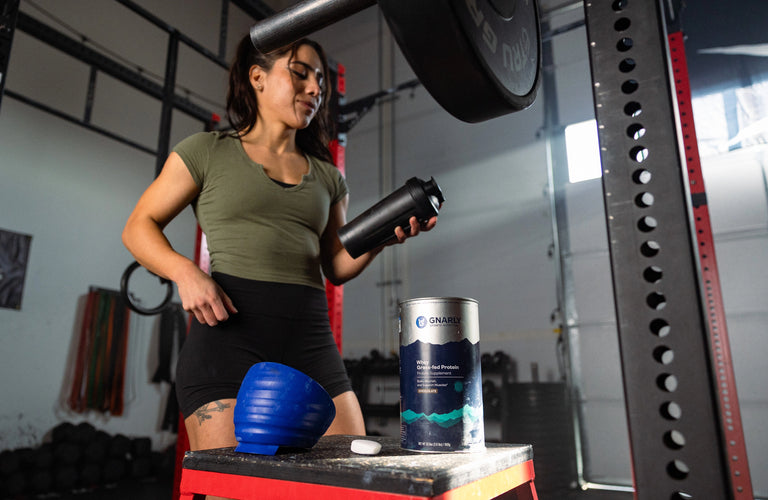In my previous post, we answered the question “are all proteins created equal?”. Now that we have the science down, let’s try to use this in the “real world” to improve our recovery nutrition and unlock our best performance.
In my years working in sports nutrition at various competitive levels, one thing remains constant: life + training = craziness. While meeting all training sessions in a week is often an accomplishment, good nutrition can sometimes feel like a “bonus.” Often, it is the small changes we make in our nutrition planning that make the largest difference in our performance.
When we think of optimal protein intake for muscle repair and growth, we must consider the “Three T’s:
- “Total” amount (meeting protein needed per day)
- “Timing” of intake (frequency and around training session)
- “Type” of protein (quality of amino acids; discussed in previous blog)
Using the examples provided below, evaluate which of the “Three T’s” are not being met:
(*note: these examples only list the protein foods and alone would not promote a healthy/performance diet)
Athlete #1:
Weight: 165 lb./75 kg
Age: 29
Omnivore
Strength-based athlete
Current Exercise Schedule

Current Protein Intake

Recommended Protein Intake

Main concern: “Total” & “Timing”
Total: based off the type of athlete and body weight, this individual exceeded their protein goal. While there is no major health concern for overconsumption of lean-protein (i.e., kidney function), [1] it may hinder your ability to adequately consume other vital nutrients essential to performance and recovery (i.e., carbohydrates, fiber, vitamins, minerals, etc.) due to its satiety effects (feeling full) [2].
Timing: by providing protein in only two feedings, this individual is not optimally meeting timing requirements. Optimal timing would look like 0.25-0.30 g/kg per meal or ~20-25g per meal [3]. In this example, the athlete balanced their total intake over the course of 4 feedings with an emphasis on post-resistance training protein.
Athlete #2:
Weight: 140 lb./63.5kg
Age: 32
Omnivore
Endurance-based athlete
Current Exercise Schedule

Current Protein Intake

Recommended Protein Intake

Main concern: “Total”
Total: this athlete is not meeting their protein goal. Meeting protein needs is accomplished through small additions of high-quality protein to existing feedings.
Athlete #3:
Weight: 155lb./70.5kg
Age: 37
Vegan
Strength-based athlete
Current Exercise Schedule

Current Protein Intake

Recommended Protein Intake

Main concern: “Type”
Type: the sources of protein consumed were of low-quality, which lack sufficient amino acids to promote muscle recovery, and therefore require various combinations of sources (i.e., wheat, legumes, nuts/seeds). The most practical solution for many athletes is supplement their protein needs around training (i.e., Gnarly vegan protein/Gnarly golden milk) to best achieve optimal muscle recovery.
Key takeaways:
- Hitting the “Three T’s” (timing, type, and total) provide optimal protein utilization.
- Small changes to your current daily nutrition promote sustainability.
- Supplementation can “bridge the gap” when proximity to food is limited (i.e., immediately post-training, low appetite, traveling).
If you haven’t before, write your own training schedule and nutrition intake. Identify and concerns using the “Three T’s.” Then create a “recommended protein intake.” You might be surprised what you could do to support your recovery.
Citations
- Antonio, J., Ellerbroek, A., Silver, T. et al. The effects of a high protein diet on indices of health and body composition – a crossover trial in resistance-trained men. J Int Soc Sports Nutr 13, 3 (2016). https://doi.org/10.1186/s12970-016-0114-
- Gropper, S.S., Smith, J.L., & Carr, T.P. (2022). Advanced nutrition and human metabolism, eighth edition. Boston, MA: Cengage.
- https://www.gssiweb.org/en-ca/article/sse-107-protein-consumption-and-resistance-exercise-maximizing-anabolic-potential




